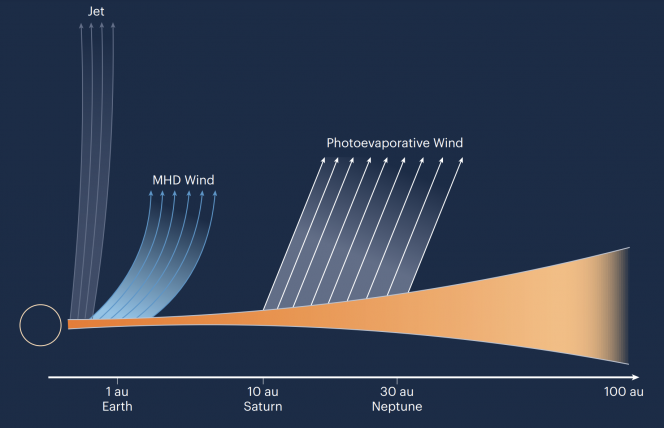Star and planet formation
The Star and Planet Formation group is led by Dr. Emma Whelan, an observational astrophysicist focussed on high angular resolution optical and near infrared observations. She has particular knowledge of the technique of spectro-astrometry. The question of “How do the stars and planets form?” is one of the oldest questions in the field of astrophysics and yet it remains one of the main topics driving current research. This is evidenced by the on-going large-scale investment in projects which cite an understanding of star formation and related activity as one of their main scientific goals. For example, the “Birth of Stars and Protoplanetary Systems” is one of the four themes on which the James Webb Space Telescope, will focus. The accretion and outflow phases are important stages in the formation of a star and the accretion disks in which planets may eventually form are also widely studied. However, not all the mass in a star forming region will go into making stars. Typically 5 % will form the sub-stellar brown dwarfs. Brown dwarfs are the so-called “failed stars”, that never manage to reach masses, and therefore temperatures, high enough for hydrogen fusion to occur. The BD mass range lies just below the normal hydrogen burning mass limit and as such, brown dwarfs are the link between stars and planets. The question of how brown dwarfs form is still an open one in the field of star formation and an important step towards understanding this came when it was found that brown dwarfs were strong accretors, had accretion disks and could drive outflows.

The expertise of Dr. Emma Whelan’s group is in high angular resolution spectroscopic observations of outflow and accretion activity in young stars and brown dwarfs. The group is particularly interested in the question of how angular momentum is removed from a young star and how the jets and winds launched from young stars impact future planet formation. Related to this is the question of how early in the lifetime of a star planet formation begins. The group also investigates how outflow and accretion activity compares in brown dwarfs and young stars. They are involved in several projects on these topics. Dr. Whelan mainly works with the instruments of the European Southern Observatory’s Very Large Telescope and most recently the JWST. She also has experience in the radio and X-ray regimes and is very much focussed on the arrival of the European Southern Observatory’s Extremely Large Telescope.
Staff:
Postgraduate students:
- Matthew Birney
- Noah Otten
- Sean Mills
- Aparna Unni
